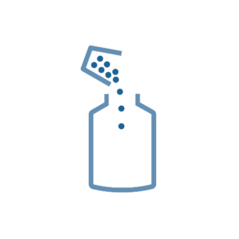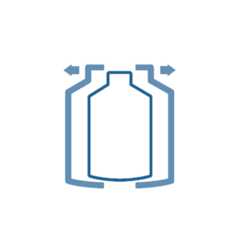Rotational moulding
Rotational molding is a cost-effective manufacturing process in which plastic products are cast using a steel or aluminium mould. The products are cast in one piece without joints, are free from built-in tension and make the best use of raw materials by optimising the desired wall thickness and strength. The finished products are very robust and impact-resistant. The most common raw material used is polyethylene (PE), a thermoplastic with many good properties. Excellent chemical resistance, negligible moisture absorption and high elasticity give polyethylene a wide range of uses.
Our experience in rotational molding dates back to the 1950s and, through close cooperation with customers and suppliers, we have become specialists and sought-after partners for successful projects all the way from design, production and quality control to finishing and, not least, good logistics solutions.
Why use rotational molding?
Rotationally molded products are always hollow bodies – in other words, they are built up as a shell. Examples of suitable products and applications include: Tanks and containers, outdoor furniture, lamps, cones and barriers, covers (ex), pipes (ex), splash guards, spa baths, safety boxes, outdoor toys, tool boxes, buoys & floats.
Our machine park can manufacture products from the size of a handball up to about 25m3 and with a wall thickness nominally between 3-10mm. The molds we cast in have low investment costs, making rotational molding a suitable process for smaller product runs, from 100 pieces a year and up. Connections such as threads and bushes can often be cast directly during the process or may be subsequently installed in our assembly department.
A sustainable product
The raw material that we use for rotational molding is high-quality plastic in powder form that has been carefully tested and verified by us. We are also able to adjust the material selection on the basis of the product’s requirement, the basic raw materials usually being PE (Polyethylene), PP (Polypropylene) or PA (Polyamide). Our raw materials should not be confused with simpler disposable plastics, for these are plastics with a long service life that may be recycled numerous times.
All our production waste is ground down and recycled. We maintain a strong focus on sustainability, as may be seen through our investment in Nordic Plastic Recycling, a recycling company creating the conditions for sustaining materials in a closed cycle.
Of course, being sustainable is about much more than just the choice of materials. We work with sustainability at all levels and aim to minimise our environmental impact by making active sustainable choices in relation to materials, processes and transportation. We work continuously with our logistics and shipping optimisation, making sure, for example, that our products are optimised for shipping from as early as the design phase.




